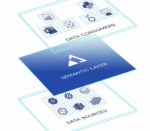When asked about where to look for business intelligence in the context of SharePoint, I have a go-to answer: Follow the Microsoft Server SQL team.
This may not seem intuitive on the surface. SharePoint is its own application with its own ecosystem. A product like PerformancePoint is the perfect example of the SharePoint business intelligence ecosystem: Add-on functionality that enables evaluation of business performance via dashboarding and reporting. This leads to the conclusion of looking to the ecosystem and see what other products facilitate SharePoint business intelligence.
At this moment, this is a small part of SharePoint business intelligence. While SQL is the data store, the SQL team has always been the holder of the keys to business intelligence at Microsoft, even for a behemoth like SharePoint.
A few weeks ago, Microsoft had its first SharePoint conference in two years. The keynote, while solid, had little in the way of major announcements. However, a portion of the keynote was given to demonstrating SharePoint running on Denali (codename for the next version of SQL) and showing off its “always on” technology. Hello, SQL Server Team.
At the conference, there were multiple sessions on Project Crescent. This is an interactive Web-based querying and visualization tool. This tool can only be used with SharePoint. But who built it? Hello, SQL Server Team.
PowerPivot: Again, hello, SQL Team.
Finally, one week after the Microsoft SharePoint Conference was the PASS Summit. This is a gathering of SQL Server and business intelligence users dedicated to Microsoft SQL Server and run by a not-for-profit association. At this conference, the official names for Denali and Project Crescent were released in the keynote: SQL Server 2012 and Power View, respectively.
That is how valued the Microsoft SQL Server team and its business intelligence initiatives are to Microsoft. That does not mean SharePoint is a second-class citizen. A friend of mine who is one of the “fathers” of PowerPivot said one time that SharePoint can be seen as the face of SQL Server. Combining the ecosystems of both products is producing a synergy that is reverberating through our workplaces.
It has been said that knowledge is power, and knowledge in our day and age comes in the form of data and the collection of data. SQL Server 2012 will store the data and SharePoint will assist in surfacing that data in many different ways. Microsoft is behind the curve on business intelligence, but it just announced last week was a new version of SQL Server 2012 called the Business Intelligence edition.
With three editions now (Standard, Enterprise and Business Intelligence), Microsoft has only scratched the surface and shown us where they are headed. Follow the Microsoft SQL Server Team!
Peter Serzo is a Senior SharePoint architect at High Monkey Consulting.





